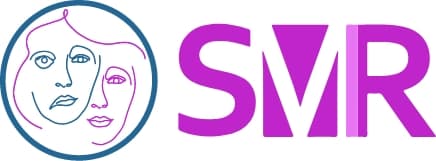The Courage of Justin Bieber
In the last few days, many of my medical students and patients asked me if I had seen the video of famous singer and songwriter Justin Bieber talking about his own experience with facial paralysis, being given the diagnosis of Ramsay Hunt Syndrome (Type 2). Subsequently, one of my students sent me the video and after looking at it, my first instinctive reaction was …”that was brave of him.”
Regardless of who you are, experiencing facial paralysis is a traumatizing event for anyone. Every week I see many patients with facial paralysis caused by a variety of causes, and one of the most common things they tell me, once we get to know each other, is that there was so little information about facial paralysis out there. Some were even told by other physicians that nothing could be done. In other words, we need to improve education about the subject for both patients and physicians. The short, honest, and heartfelt video that Mr. Bieber produced is worth much more than a thousand words and will undoubtedly impact the public knowledge about facial paralysis in general and Ramsay Hunt Syndrome in particular.
What is Ramsay Hunt Syndrome?
Most patients I see with Ramsay Hunt present with different degrees of facial paralysis. Facial paralysis in general, means severe weakness of the facial muscles (mimetic muscles), which help us produce facial expressions, such as smiling, frowning, lifting the brow, closing the eye, and blinking. Frequently, patients will also complain about:
- Loss of taste in portions of the tongue
- Sensitivity to noise because of paralysis of the smallest muscle in our body (the stapedius muscle for the ear)
- Dry eyes
All of this is caused by an acute injury to the facial nerve, which in cases of Ramsay Hunt Syndrome, is caused by a virus called the varicella-zoster virus.
Frequently, patients will experience some degree of ear pain the day before and wake up the next day with a paralyzed face. Though in the more classic presentation, patients may experience a blister-like rash on the ear (zoster oticus) most patients do not. In fact, the diagnosis of Ramsay Hunt Syndrome is not always easy, and frequently patients are diagnosed with Bell’s palsy. If patients do not have the typical “rash,” blood tests confirming either varicella-zoster virus antibodies or the presence of varicella-zoster virus DNA in the skin of the ear, saliva, middle ear fluid, or blood help confirm the diagnosis.
What should you do for facial paralysis?
So, what should be done if you develop facial paralysis within a period of 24 to 48 hours?
1. Seek Medical Attention
The first thing is to go to either your primary care physician or to the emergency department. Once other causes of facial paralysis are ruled out, you will receive both steroids and antiviral medications.
2. Protect the Eye
The second priority is eye protection. This can be done with eye drops during the day and ointment during the night before going to sleep, and some patients even prefer putting a patch on the eye before they go to sleep.
3. Wait for Improvement
The third thing to do is wait! This is the most difficult part. Most patients will demonstrate some recovery within the first 3 months and continue to improve in the following months. The tone in the face improves, the droopy lower eyelid slowly returns to its original position, and the mouth is straighter. These will be the first signs of recovery. How much improvement is seen differs between individuals. Some patients will return to normal, some will have a slightly weaker face, and some patients will develop synkinesis.
Synkinesis is when the facial nerve, also called cranial nerve 7, partially recovers but not in a normal way. Patients with synkinesis will sometimes experience excessive tension in the face, facial muscle tightness, and involuntary facial movement (oral ocular or ocular oral synkinesis), which is often experienced as closure of the eye when attempting to smile or the opposite – movement of the mouth when attempting to close the eye.
Is there a treatment for Ramsay Hunt syndrome?
The most important thing to do in the first 3 to 6 months is to protect the eye and wait, as I explained above. Many patients will not need any further treatment. If around 6 months, no motion is seen, then I advise patients to see an expert in the field of facial paralysis who will educate you about the different options available specific to your clinical presentation (weak face versus synkinetic face). It doesn’t mean that surgery is immediately needed, but it does mean that it’s a good time to create a trusting relationship with your surgeon so they may help you navigate the journey to recovery if interventions are needed. A knowledgeable physician will use all the tools in their armamentarium to help you, and these may include physical therapy, the use of BOTOX®, and surgery.
Can Ramsay Hunt syndrome be treated with surgery?
This is a broad topic, perhaps too broad for this blog. The specific choice of surgery (only if needed) will depend on the patient’s specific clinical situation and should absolutely be personalized and modified for each particular patient.
Hopefully this blog helps patients to better understand facial paralysis in the setting of Ramsay Hunt Syndrome. Wishing a fast recovery to Mr. Bieber so he can continue to bring joy to his millions of fans.
Shai M. Rozen, MD, F.A.C.S.
If you’re experiencing facial paralysis and would like to discuss your treatment options with Dr. Rozen in Dallas, please request a consultation.


Thanks for an informative blog post!